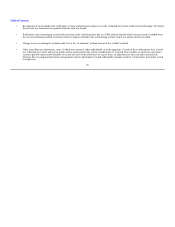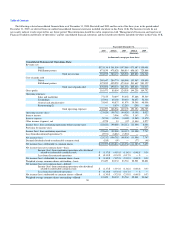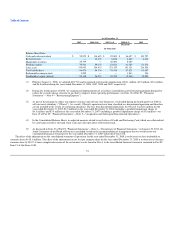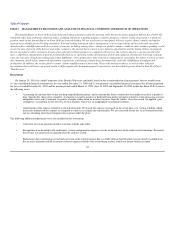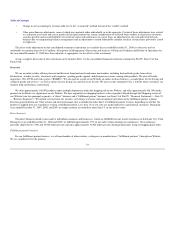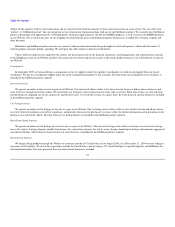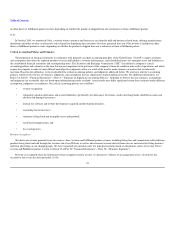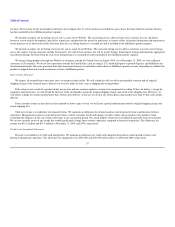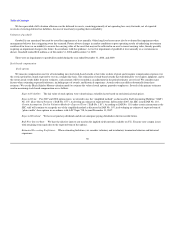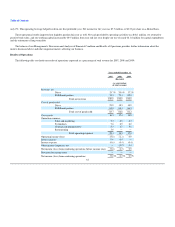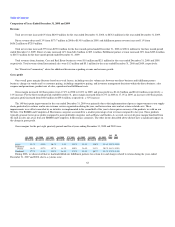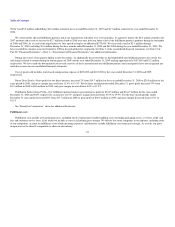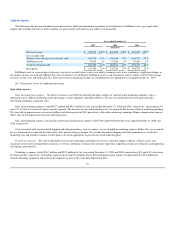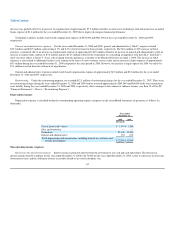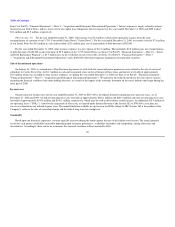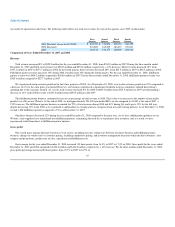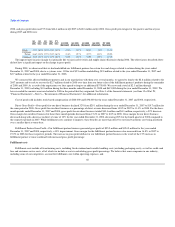Overstock.com 2009 Annual Report Download - page 62
Download and view the complete annual report
Please find page 62 of the 2009 Overstock.com annual report below. You can navigate through the pages in the report by either clicking on the pages listed below, or by using the keyword search tool below to find specific information within the annual report.
Table of Contents
We have provided a full valuation allowance on the deferred tax assets, consisting primarily of net operating loss carry-forwards, net of expected
reversals of existing deferred tax liabilities, because of uncertainty regarding their realizability.
Valuation of goodwill
Goodwill is not amortized, but must be tested for impairment at least annually. Other long-lived assets must also be evaluated for impairment when
management believes that a triggering event has occurred. Future adverse changes in market conditions or poor operating results of underlying investments
could result in losses or an inability to recover the carrying value of the asset that may not be reflected in an asset's current carrying value, thereby possibly
requiring an impairment charge in the future. In accordance with this guidance, we test for impairment of goodwill at least annually or as circumstances
dictate. Goodwill totaled $2.8 million as of December 31, 2008 and December 31, 2009.
There were no impairments to goodwill recorded during the year ended December 31, 2008, and 2009.
Stock-based compensation
Stock options
We measure compensation cost for all outstanding unvested stock-based awards at fair value on date of grant and recognize compensation expense over
the service period for awards expected to vest on a straight line basis. The estimation of stock-based awards that will ultimately vest requires judgment, and to
the extent actual results differ from our estimates, such amounts will be recorded as an adjustment in the period estimates are revised. We consider many
factors when estimating expected forfeitures, including types of awards, and historical experience. Actual results may differ substantially from these
estimates. We use the Black-Scholes-Merton valuation model to estimate the value of stock options granted to employees. Several of the primary estimates
used in measuring stock-based compensation are as follows:
Expected Volatility: The fair value of stock options were valued using a volatility factor based on our historical stock prices.
Expected Term: For 2007 and 2008 option grants, we elected to use the "simplified method" as discussed in Staff Accounting Bulletin ("SAB")
No. 107, Share Based Payment ("SAB No. 107"), to develop an estimate of expected term. In December 2007, the SEC issued SAB No. 110,
Certain Assumptions Used in Valuation Methods—Expected Term ("SAB No. 110"). According to SAB No. 110, under certain circumstances the
SEC staff will continue to accept the use of the simplified method as discussed in SAB No. 107, in developing an estimate of expected term of
"plain vanilla" share options in accordance with ASC Topic 718, beyond December 31, 2007.
Expected Dividend: We have not paid any dividends and do not anticipate paying dividends in the foreseeable future.
Risk-Free Interest Rate: We base the risk-free interest rate used on the implied yield currently available on U.S. Treasury zero-coupon issues
with remaining term equivalent to the expected term of the options.
Estimated Pre-vesting Forfeitures: When estimating forfeitures, we consider voluntary and involuntary termination behavior and historical
experience.
59


